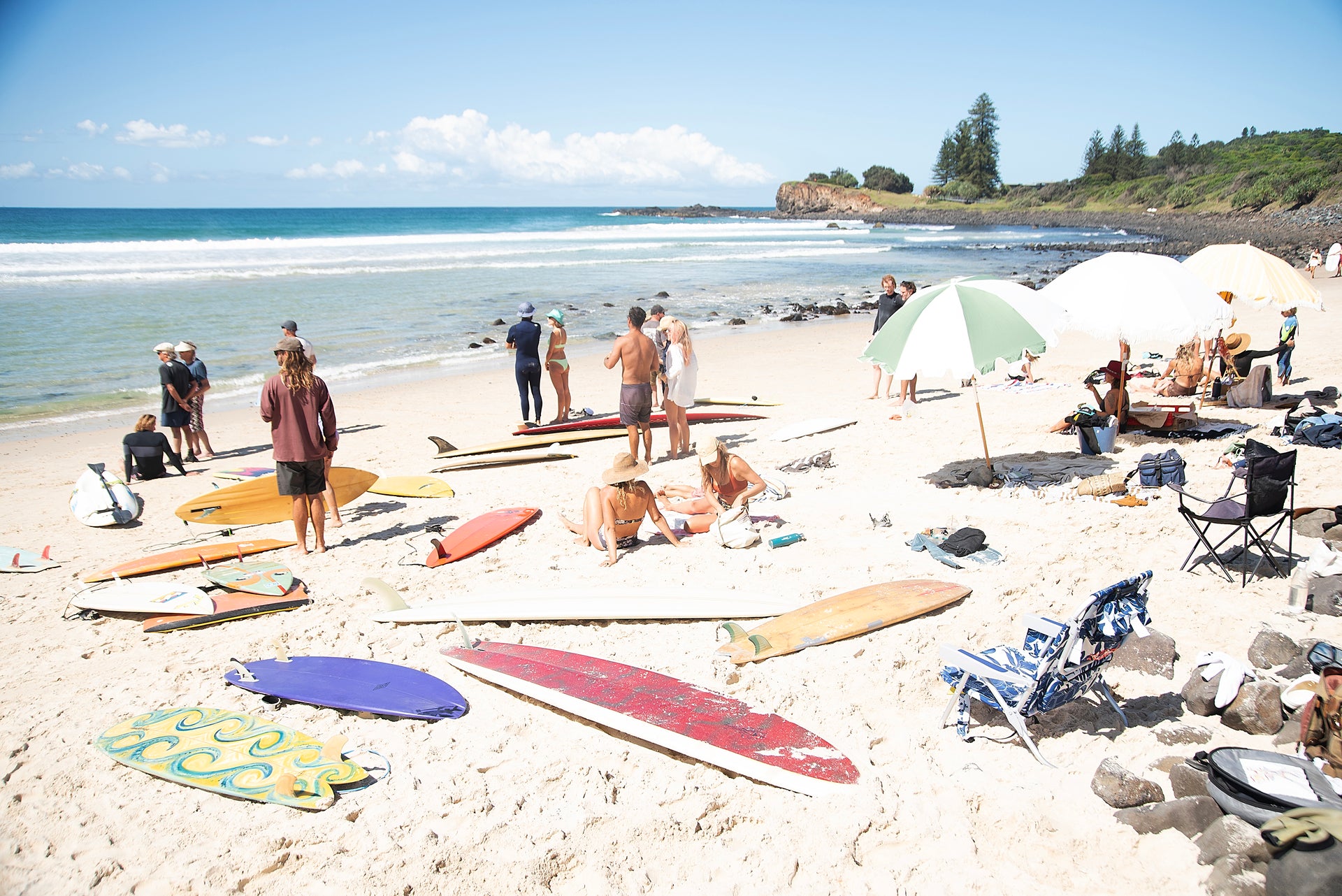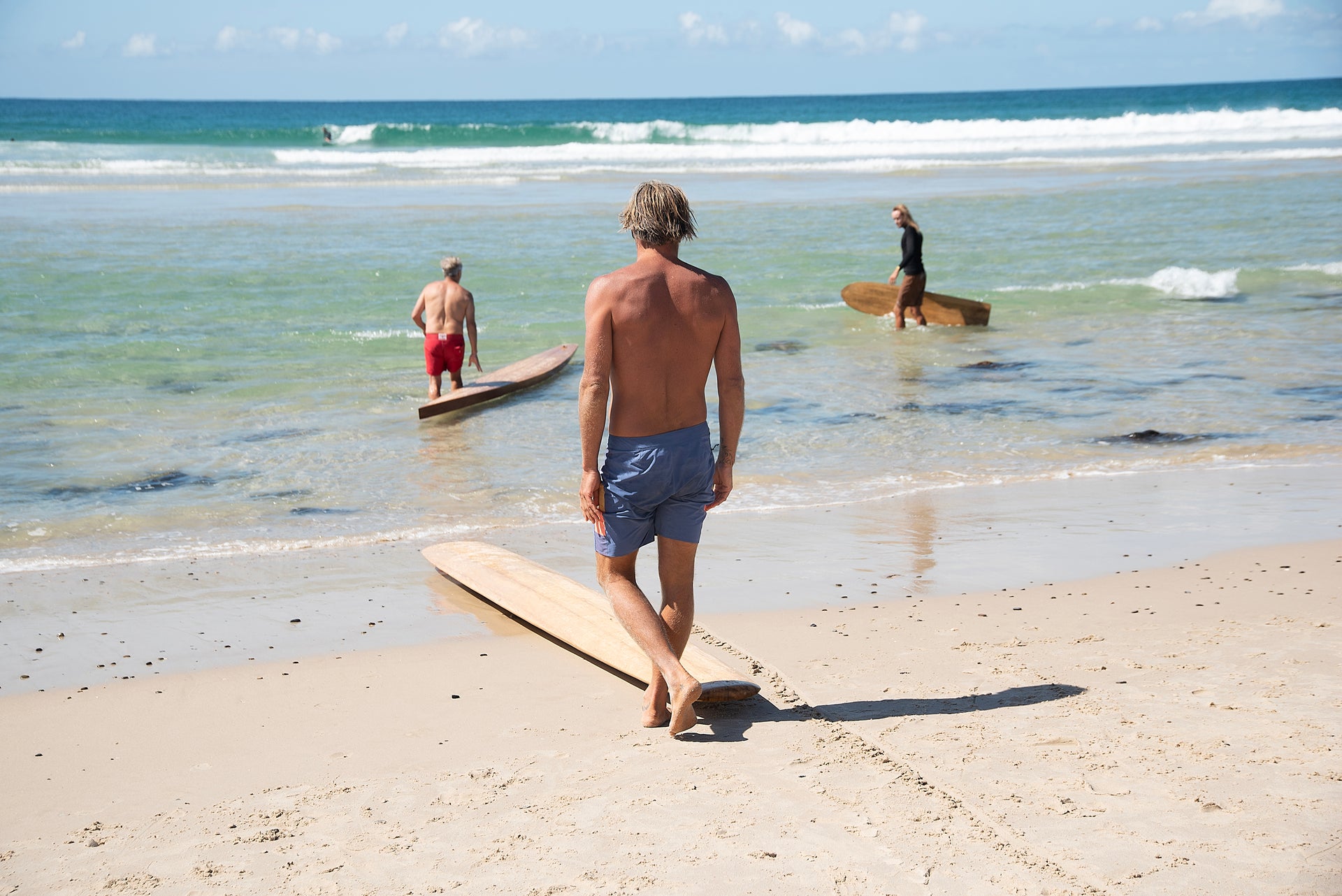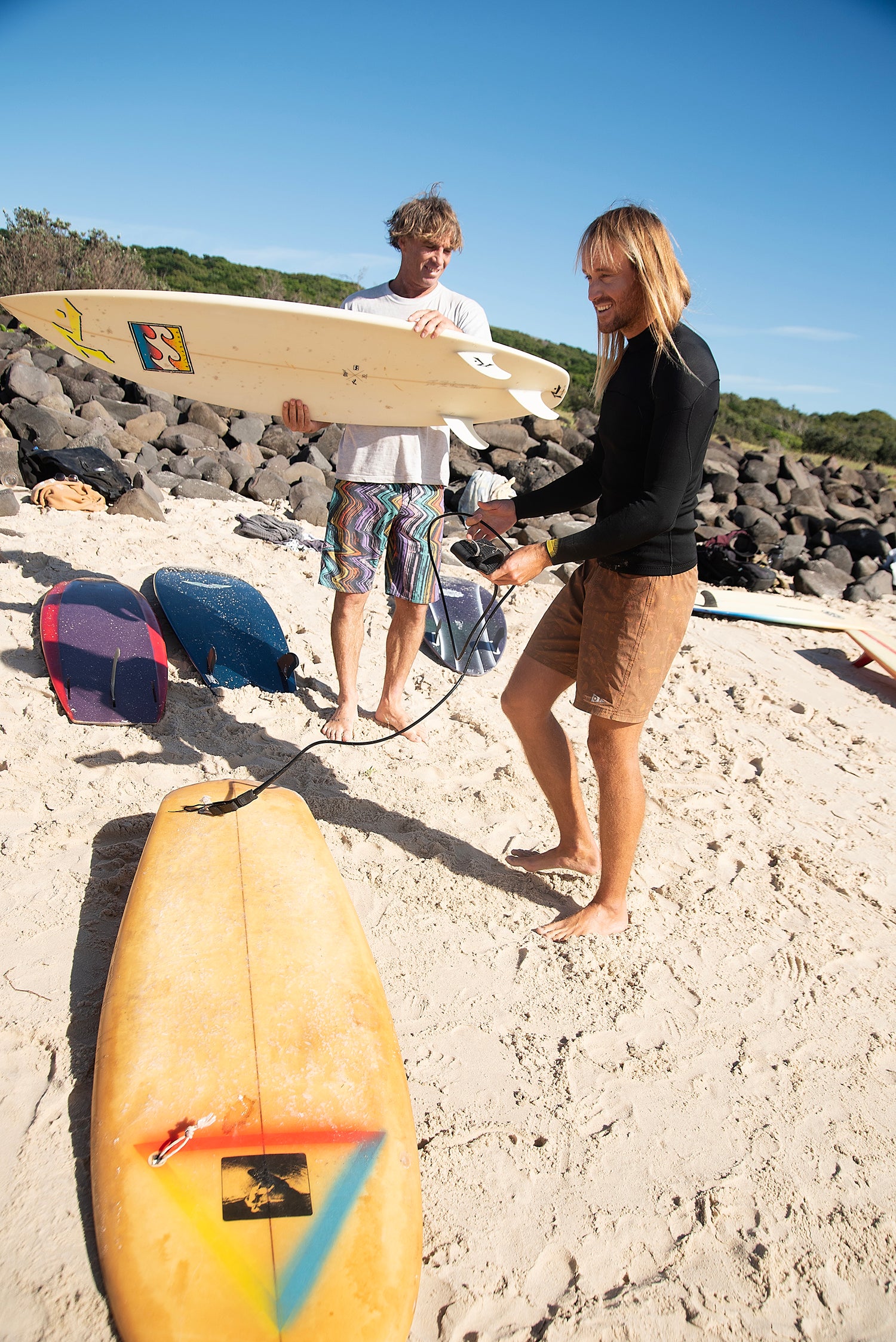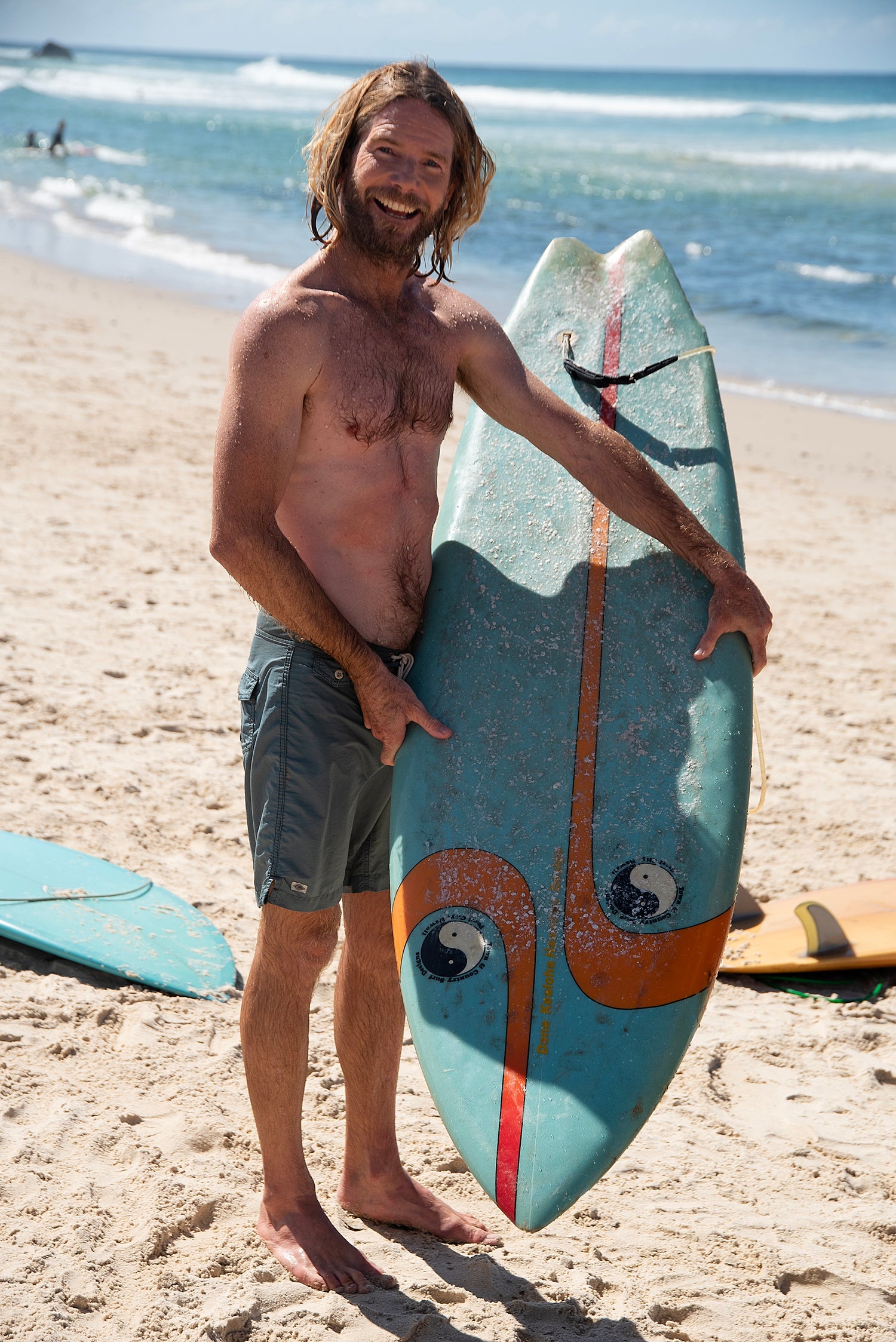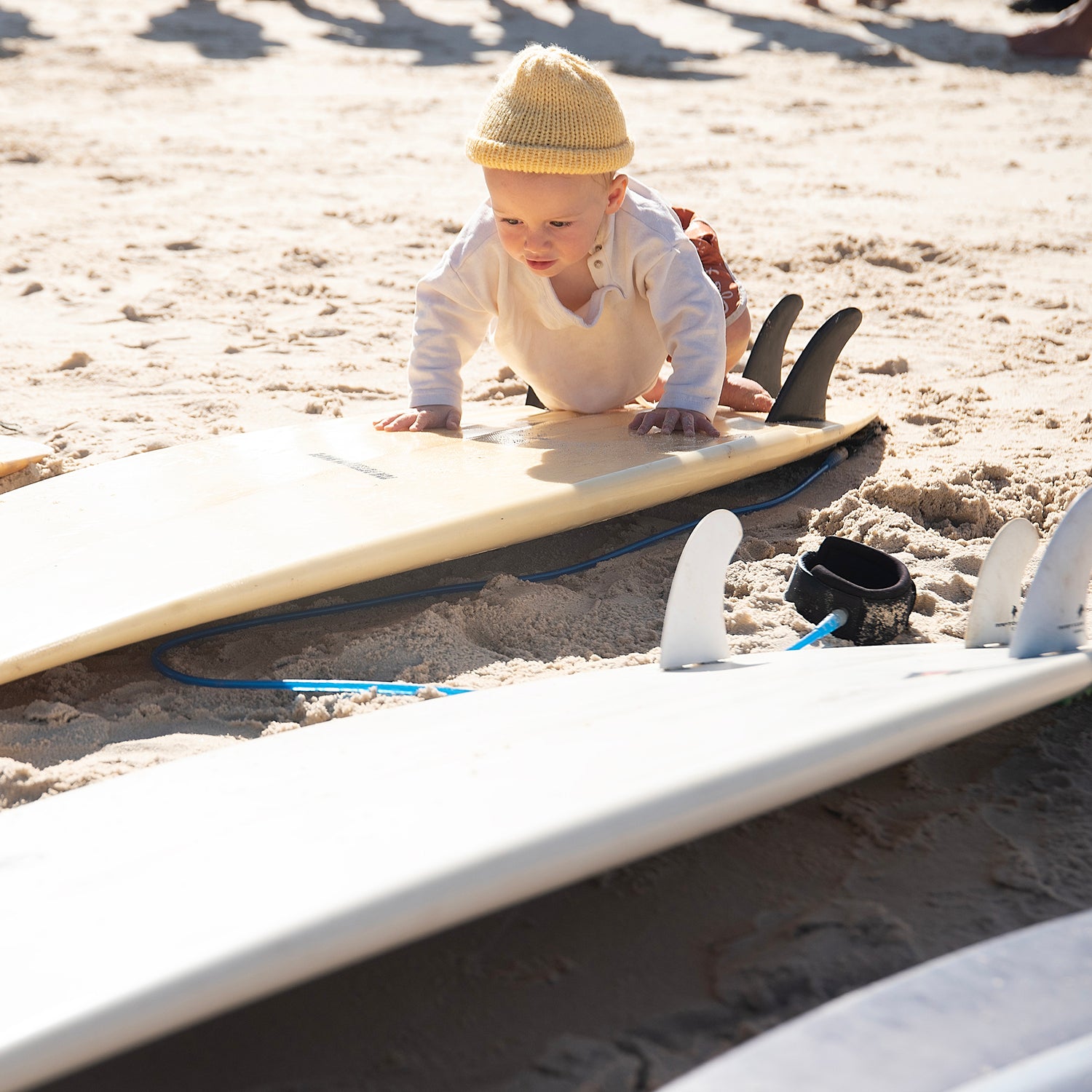A clear blue wave unfurls around a green headland, fringed by black rock and haloed by soaring white gannets. Sinuous clouds dance in the sky above and myriad fish dart between the surface of the water and the sand rippling with ribbons of light below. In all directions our eyes are enthralled by diverse curves and shapes. Then we see a human on a white foam surfboard skim across a wave. The wave behind reveals another human on a white foam board. They lift and fall in the same way, angular almost jagged lines that feel strangely repetitious in this curved space filled with variation. We may note that the uniformity of the surfing humans seems odd in the wild turbulence of the surf.
If we have enough sun lines on our face, scars on our feet and red in our eyes, our next thought may drift back to when surfboards and surfers were as colourful, varied and diverse as the waves. If we are younger than that, have we had many opportunities to develop that kind of scope? Is the modern surfer missing one of the central charms of surfing by riding one way all the time?
Maybe. What happens to us surfers when we shake modernity’s pervasive push to homogenise? What happens to us when we reach back through time and learn from yesterday’s surfers and the less industrialised world they lived in? Could surfboards be a type of talking stick to open up communication, between ourselves, the water, and each other?
I like thinking these kinds of thoughts.




